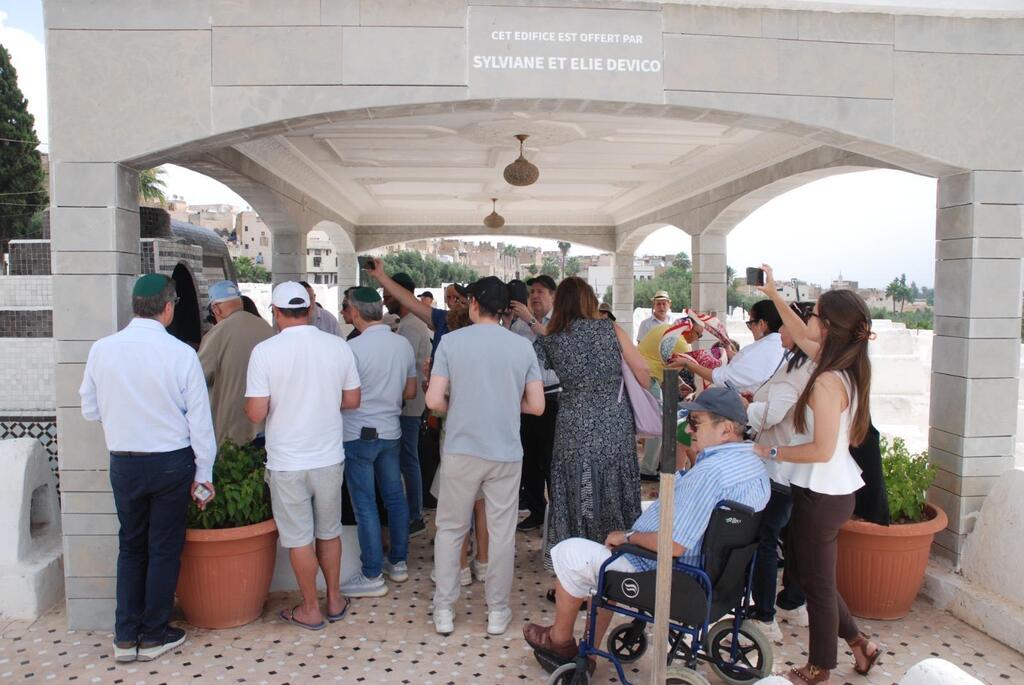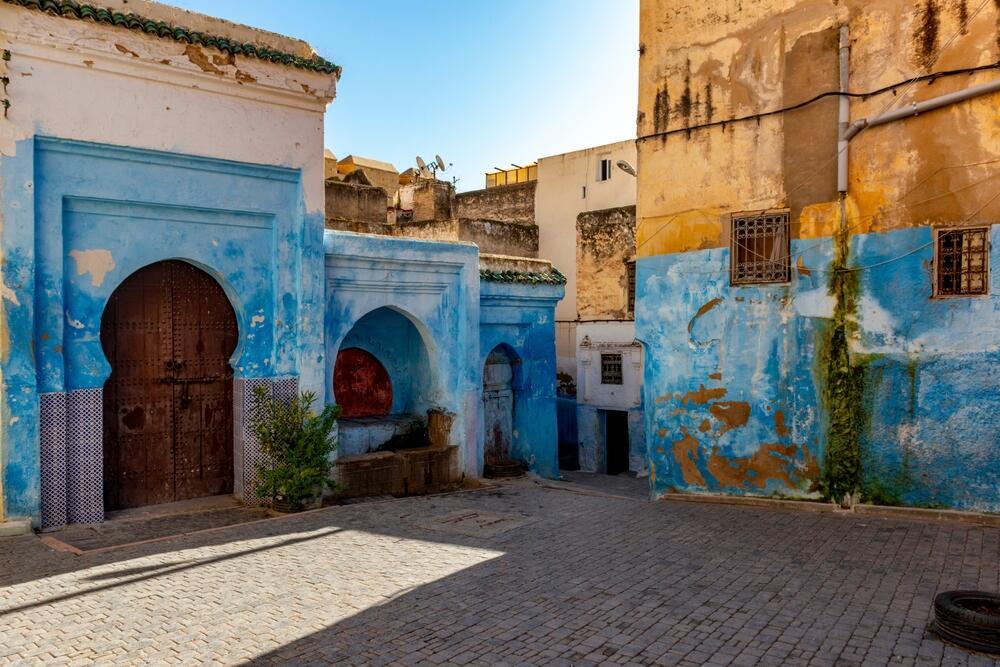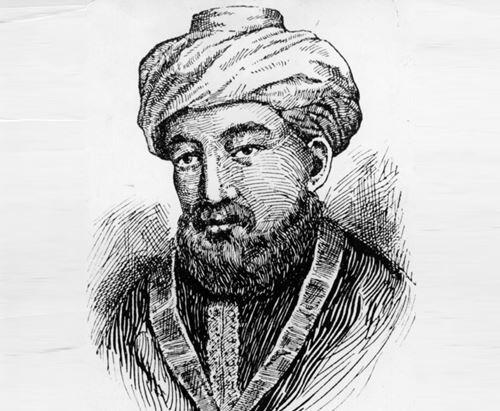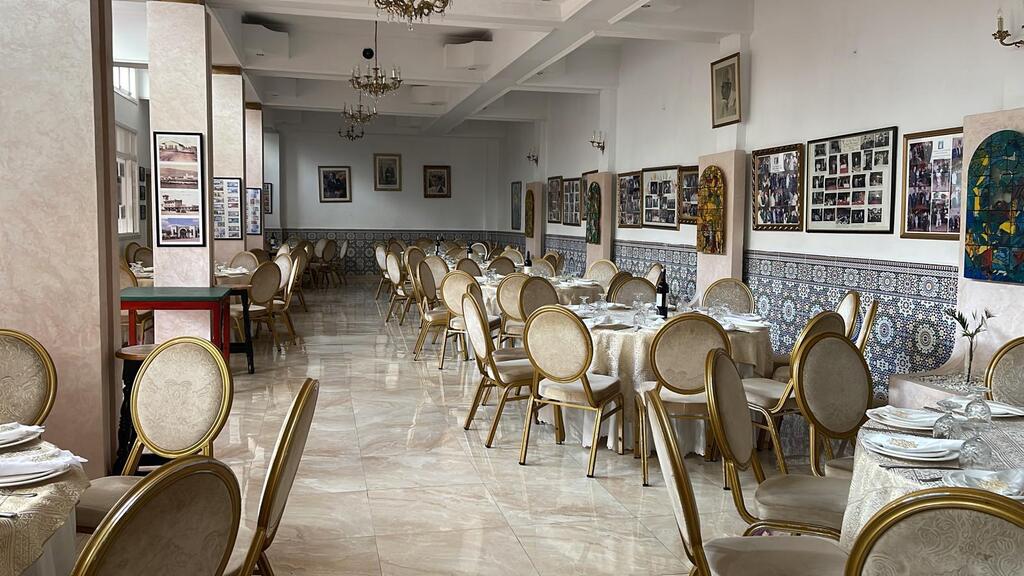During the height of the war between Israel and Iran, we arrived in Fez, Morocco, for the annual hilula (pilgrimage) honoring Rabbi Yehuda Ibn Atar. Despite the tense global atmosphere, around 150 Jews—mostly French—gathered for a communal Friday night meal. Their joy was real, but so was their concern for the situation in Israel.
At first, I feared for my safety and almost canceled, but when I finally overcame the anxiety and arrived, I was moved to see everyone feeling secure, even in the heart of a Muslim country. The warmth of the people slowly eased my worries.
I followed the sound of singing and prayer to the Talmud Torah synagogue on the upper floor of the Jewish community center. The melodies and atmosphere—deeply Moroccan-Sephardic—brought tears to my eyes. The cantor wasn’t the usual one, but a guest attending the hilula. Since the death of the community's former rabbi, Avraham Sabag, no successor has been appointed. The center also includes a mikveh, an events hall and a small kosher store.
After services, I spoke with Frédéric, a community member whose father was Muslim and mother Jewish. He chose to embrace Judaism fully and remains active in the community, though he still refers to his Muslim childhood friends as “brothers.”
Fez, Morocco’s imperial city, was once a thriving Jewish center in North Africa. Evidence of Jewish life there dates back to Roman times, even before the arrival of Islam. Under Islamic rule from the 8th century, Jews were granted protected status (dhimmi) in exchange for a tax. Despite centuries of hardship, including persecution and pogroms, the community not only survived but flourished.
The Golden Age of Fez’ Jewish community came after the expulsions from Spain and Portugal (13th–15th centuries). Thousands of Sephardic refugees enriched the local Jewish culture with their knowledge, skills and customs. A blend of traditions emerged, combining the native “Toshavim” (local Jews) with the newly arrived “Megurashim” (exiles).
Fez became a hub of Jewish scholarship, home to famous yeshivot, community institutions and rich libraries. Prominent Jewish figures who lived or studied in Fez include Maimonides (Rambam), Rabbi Isaac Alfasi (the Rif), the Ibn Danan family and Rabbi Yehuda Ibn Atar.
The community also produced notable poets and grammarians like Dunash ben Labrat and Rabbi Judah Hayyuj, as well as Rabbi Yehuda ibn Shmuel ibn Abbas, who composed the liturgical poem Et Sha’arei Ratzon Lehipateach.
The city's Jewish traditions were rich, combining ancient customs with Sephardic influences—especially in liturgy, food and family celebrations. Jews lived in the “Mellah,” a walled Jewish quarter established in the 15th century, bustling with commerce and tight-knit community life.
In the 20th century, the community began to decline, especially after the establishment of the State of Israel in 1948. Mass emigration in the 1950s and 1960s left only a few dozen Jews in Fez today. Most current members are elderly descendants of families who chose to stay. Two synagogues—Talmud Torah and Ben Saadon—still function and host services, especially during holidays and memorial events. The community also maintains the Jewish cemeteries.
Among the community’s leaders was Eliyahu Douekou, a beloved figure who maintained the cemetery for decades. Before he died, he told his family he wanted to be buried in Fez, no matter where he passed away. His daughter, Joanna, honored his wish, buried him there and vowed to continue his work, including organizing the annual hilula.
I met Eliyahu by chance years ago when I visited the cemetery. He kindly helped me light a candle and shared stories about those buried there—including one that stayed with me: the tale of Solica Haguel.
Get the Ynetnews app on your smartphone: Google Play: https://bit.ly/4eJ37pE | Apple App Store: https://bit.ly/3ZL7iNv
Known as Lalla Solica or "the righteous woman of Fez," Solica was a Jewish girl from Tangier who was executed in 1834 at age 17 after refusing to convert to Islam. Her unwavering faith made her a symbol of martyrdom for Moroccan Jews, and her grave became a pilgrimage site for both Jews and Muslims.
Before his death, Eliyahu asked me to help write Hebrew signage for the cemetery. I gladly agreed, and visitors today can still see that small contribution when they walk through the gates.
After the Friday meal ended, I was surprised to see police and security escorts guiding the guests back to their nearby hotel. It was touching to witness such care in a Muslim country, more so than in many European nations today.
There’s mutual respect between Moroccan Muslims and Jews, a model for coexistence rooted in dignity and compassion. As for the future, the Jewish community in Fez is aging. The younger generation faces economic and social challenges and often chooses to leave for better opportunities. The result may be that this ancient community could vanish within a generation.
Still, I hope its Jewish heritage continues to survive, perhaps in smaller form, if tradition is preserved and young people are given reasons to stay and carry it forward.
- Ayelet Mamo Shay is a businesswoman, author and researcher of Jewish communities around the world





